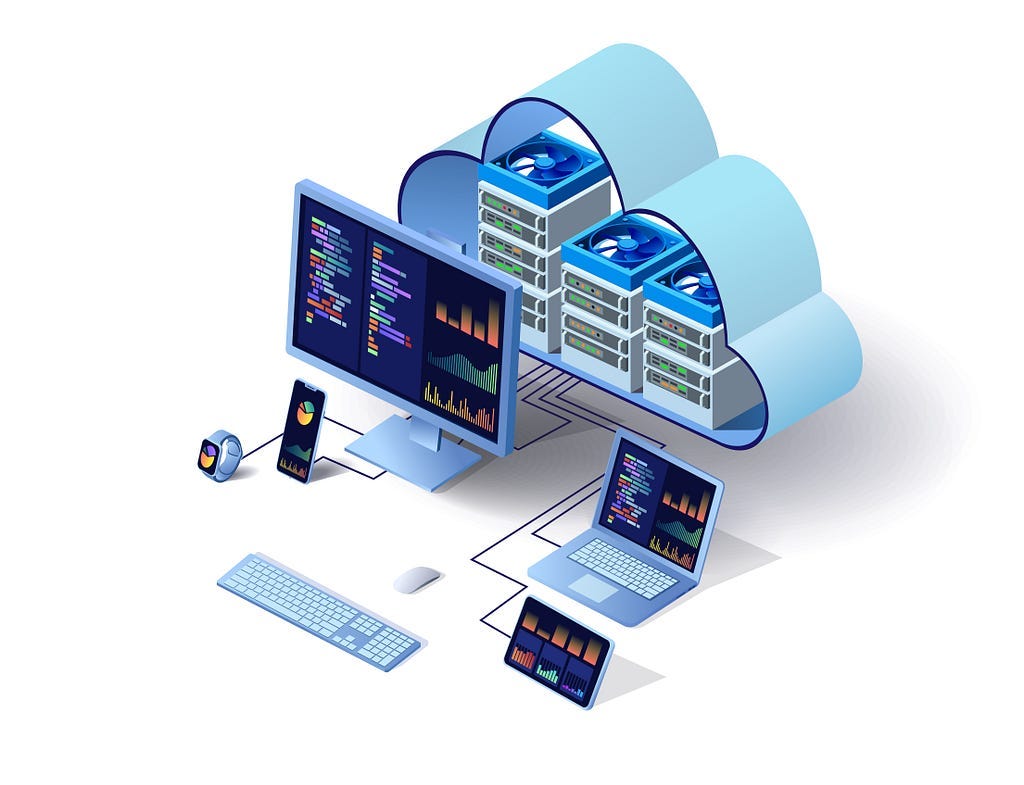The State of Desktop Computer Change, Spring 2022
Some Relevant Notes on the Ongoing and Changing State of Computer Upgrades
First Edition. This position paper is entirely a matter of opinion.

Beware Moore’s and Murphy’s (Fake) Laws
“Moore’s (non-) Law” of computing, right up there with Mr. “Murphy’s (non-) Law,” gladly do not apply. That’s good and obvious, because those poor versions of Natural Laws never truly applied, originally. Each of these tenets does nearly ironclad predict constant rates (or exponents) of change… indefinitely. These tenets interrelate one long-term effect as exclusively dependent on just one affecting input factor, and thus are highly misleading, and also are greatly miscuing. These are classic examples of “linear causality” theories, which repeatedly disappoint the proponents.
These ironic (fake) Laws may be clean fun when in the mood to lightly poke fun at nature and natural law, or when in the mood to trade (justified or unjustified) negative criticisms at computer system hardware and software providers. But there can arise undesirable (to just about any person’s recall) backfire at one’s own natural existence, and/or at the very computing personal capabilities which most of us do actually appreciate. Many readers might already concur with these observations of mine, at least in some part.
“Some of these after-effects are unavoidable” — in total — but they are readily personally curbed. 100.000% avoidance is no reasonable goal by any standard, but instead qualifies as a perfectionistic goal, so such a statement becomes immediately suspect of “self-foolery.” My observation is that such a claim to — the impossibility of reduction to 0.0000% existence — is often touted to justify a boosting of the degree of existence, or to justify reducing most effort to maybe counter against inflammation of the degree of existence — a whopping 5% to 95% (in notional numbers) — above what might have been plenty (or more than plenty) already.

Intricacy Law
Of excellent news for us all, is a reality I have noticed over recent years. Due to both positive experiences and negative experiences for many persons — on all sides and in many roles, regarding computers — there has developed in this global world a newfound adept savvy concerning computer and smartphone issues and factors, the adaptability and dynamic of which cannot be simplified or refined into something “simple” to remember. In a better type of irony, personal open-mindedness—astute to complexity and surprising relevant factors being quite feasible — is what I see on the rise, and this sensibility developing within humanity, now near the (not quite) “end of the transportation revolution,” is great news. Maybe this affinity for intricacy is a side-effect of recent humankind adaptability when facing exaggerated bad news (while accompanied by good news aplenty, yet with the good largely unheralded). Whether side-effect or main-effect, intricacy affinity shines with superb potential, and I feel it should be pointed out, for reinforcement and furtherance.
A Counterpoint Regarding continued (Recent…) Upgrade Trends
Ultradurable motherboards have come and been replaced fairly soon, mostly for purposes of very economical upgrading available. The durability was no false advertising. One more leap in technology intervened, and buyers were wise to leverage these excellent opportunities.
An Insight into Very Recent Maturations, Readily Brought Forward via Minor Upgrades
Now that DDR4 and M.2 standards are well established and predominant, — plus more newly — TPM and Secure Boot standardizations, the driving factors of upgrade and replacement greatly differ from the driving factors of each previous half-decade (including as far back historically as the early 1960s).
(That insight is based in general personal review of my experience with desktop and laptop computing, which has been to be avidly involved with content creation usage, graphic design, and software development for such computers since the year 1986. My experience is not nearly as strong on hardware specification developments over decades of recent times, it is not nearly as strong on gameplay developments over decades of recent times, nor is it as strong concerning network engineering developments over decades of recent times.)
Each such “half-decade,” in turn seems to, in each case, differ greatly from each and every other such “half-decade,” and thus the history plays out with much more beautiful complexity — in nuance and interrelationships — than business administration educators would typically put in their analysis models. Simplicity, and going for the minimum, are gladly not as popular as they were at the turn of the century and millennia, but there are holdouts.
Upkeep of Redundancy and Similarity is now Reasonably Available, by Daisy-Chaining Sliding Windows of Approximately 5 Years
For example, I have been able to perform upkeep on a fairly old desktop client system — originally homebuilt approximately 4.5 years ago — to the effect of newfound fully-contemporary capabilities being at the ready, for very small relative financial upgrade costs, and gladly zero need to replace over half of the major components. That allows me, as a small businessman, to operate two computers of nearly identical features and capabilities, without having to turn to totally new standards or technologies (as was the case previous to the early twenties decade in which we now live), and without repeated investments being undertaken “two-at-same-timeframe.”
The operation of two similarly capable desktop computers, which are both prepared for possible unscheduled hot swap (either way) of data upon which to operate, is to me a very important and valuable situation.

My Forecast for the “Nature of Computer Technology Developments” for the Next Ten Years
I forecast that computer technology developments for the next ten years (2022–2032) would very likely be of three (3) key features:
Be very unforecastable in detail, with the ever-present reality of some partial “degree of fogginess” — concerning how much detail and intricacy could be reasonably unexpected — being of greater relevancy in driving issues of merit and being likely foggier than ever before — in the history of computing and technology.
Be very beneficial for the user, but likely not until after some enlightening but awkward growing pains of “popular and/or commercial utter rejection.” This would be most prevalent for companies and users whose first official administrative or personal action plan(s) and/or policy adjustment(s) are aimed to reject work (or effort involved) that would overturn, reinvent, or de-engineer previously adopted paradigms. Our technology inertia is now teetering at just that great of a shackling of these businesses, by these businesses themselves, and that done either by the userbase, or in the name of the userbase. This could sadly mark the end of many companies' better opportunities. This would happen most likely and most intensely to those entities exhibiting self-foolery expectations of “predictability,” and thus to those entities who have, by policy enactments, already become determined to pre-slate most all reaction plans, before reality unfolds — every time.
Be reinventive, of new ways to reapproach existing ways: either (1) more economical, (2) more minute-by-minute change sensitive, (3) more attuned to unpredictability until exact time-unfolding, with less orientation to “wait on very much” and instead more orientation to “delay on exact courses of action, while tentative action-prototypes are inconclusively mulled over,” (4) more ergonomic, (5) more enjoyable, (6) more enduring, (7) more flexible/adaptable, and/or (8) more useful.
Be one of many cultural avenues for a great shift in the maturity of humankind, in the one-by-one overcoming of “simplistic-progress inclinations.” These inclinations that we all have, and which are very difficult to end-around mentally — stem from the tremendous array of change-trends, in personal and societal lifestyle, that have been inculcated into all of us — born after approximately the year 1890. The ugly part is the mental intricacy of these times ahead being cognitively lurching upon the thoughtful thinker to consider. The beautiful part is the actual intricacy of these times ahead being of great benefit much more often than being of significant detriment (this chosen associative relationship is self-limiting, by way of stating only one pertinent “qualitative idea-ratio”). That’s presented to the reader: (1) as considered with many after-effects — of every minute of every day — touching all of us somewhat; (2) as considered person-by-person; and (3) as conceived minute-by-minute.
Thank you —
— to each reader who has personally chosen to read this far. If you have done so, then your continuance of interest through the entirety of this position paper means, to my opinion, that you were (and are) already better-suited to contribute to forthcoming unusual changes ahead, than are plenty of other persons. Surprisingly, that’s for various person-specific reasons, mostly non-blameful of anyone.
Closing Opinion —
— “Timing and placement” during all our lives thus far, with the most influential person having been the same oneself — the self ever having been present and actively involved, — still indicates that every external influence did — and does — count as “effecting input” to “personal doctrine.”
The State of Desktop Computer Change, Spring 2022 was originally published in Humen Facets Techniques (Mastery Meny Sciences) on Medium, where people are continuing the conversation by highlighting and responding to this story.
